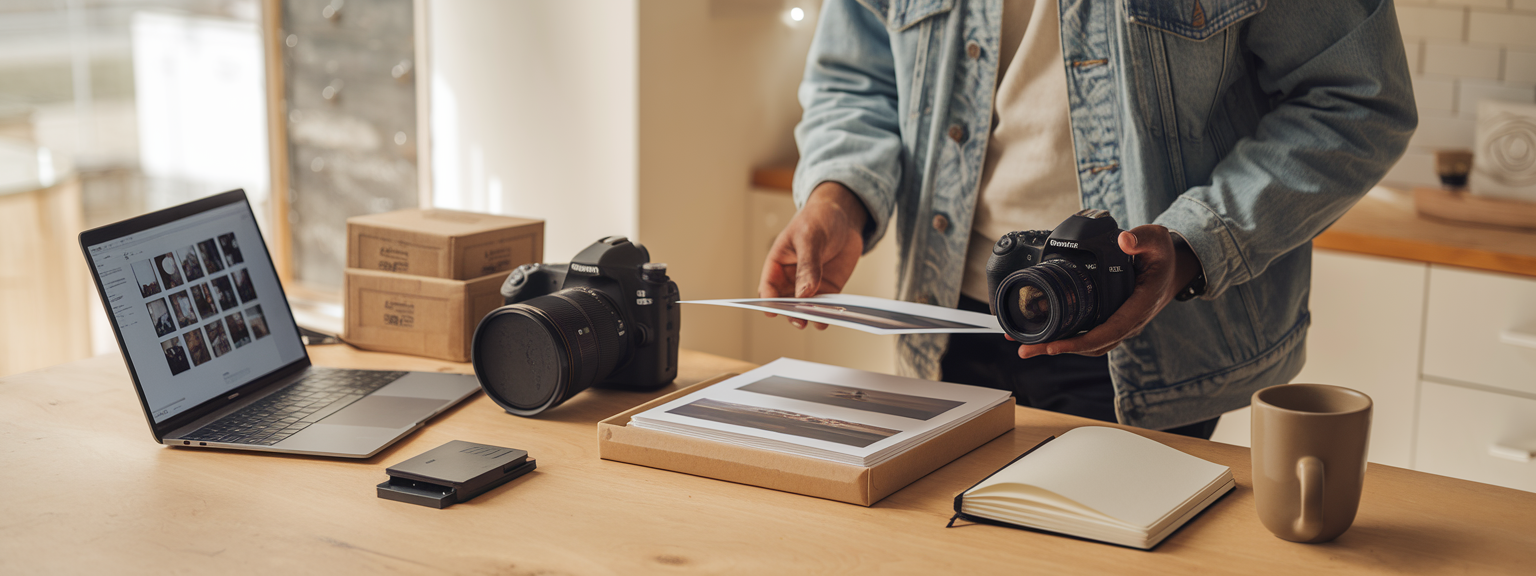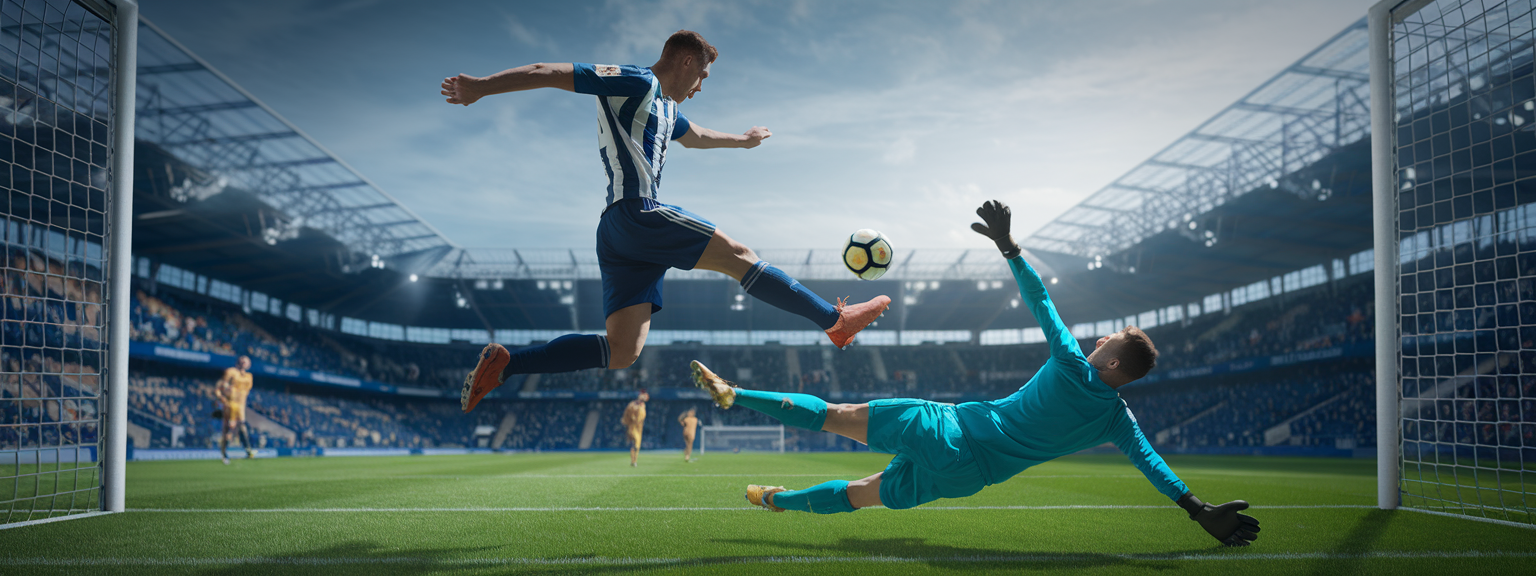Sports Photography Mastery: Capture Unforgettable Action Shots

📝 Step-by-Step Guide: Sports Photography
Sports Photography is a highly specialized niche that challenges even the most seasoned photographers. In this comprehensive step-by-step guide, we will explore how mastering action shots and refining sports camera settings can elevate your portfolio. Initially, you must understand the environment of sports events where high-speed photography is a must. Therefore, be prepared with the right gear and knowledge about dynamic action sequences.
Preparation
Before stepping onto the field, it is crucial to research the type of event you will be capturing. As a dedicated sports photographer, you must adjust your camera’s settings such as shutter speed, aperture, and ISO to suit conditions where action is relentless. In addition, consider lighting conditions, angles, and the position of the dynamic subjects to create striking emotional sports images.
Camera Settings and Modes
For superb Sports Photography, high-speed photography is essential. Therefore, use a fast shutter speed, ideally above 1/1000 sec, to capture every nuance of action shots. Moreover, utilizing continuous shooting mode is recommended. These settings help capture split-second movements, ensuring every frame is filled with energy and life. As a sports photographer, adjusting these settings accurately will result in clear, dynamic action shots that impress both amateurs and professionals.
Shooting Techniques
Experiment with various angles and zoom levels to document the emotion and intensity of each moment. A good mix of wide angles and close-up shots will deliver a complete narrative. For example, using burst mode during high-speed photography of a race can provide an array of images from which to choose the best moment of success. Such approaches enhance your ability to capture not only the action but also the drama and excitement of sports.
📌 Practical Applications: Sports Photography
Practical applications of Sports Photography extend beyond just capturing action shots at sports events. Most sports photographers quickly learn that every image tells a story. For instance, during a soccer match, combining wide-angle views of the entire field with focused close-ups of players can communicate the pace of the game and highlight the tactical plays involved. In addition, these techniques help in producing impactful portfolios that attract clients and publications in the sports niche.
Event Coverage
When covering sports events, you must always prepare for unexpected dynamic action. A reliable camera and an understanding of Sports Camera Settings enable you to quickly adapt to rapidly changing environments. In scenarios like indoor sports or low-light conditions, tweaking your ISO and using faster lenses can significantly improve your results. These small adjustments ensure that every intense moment is captured accurately.
Editorial and Commercial Use
Sports Photography is not simply about taking pictures; it’s an art form that translates into editorial spreads and commercial advertising. Many sports photographers develop their unique style and earn reputation as expert sports photographers by merging technical expertise with creativity. For example, combining action shots with background blur can emphasize speed and energy, thereby creating emotional sports images.
💡 Tips & Tricks: Sports Photography
Discovering the best practices in Sports Photography can transform your workflow and image quality. Here, we explore critical tips and tricks that every emerging sports photographer should consider. Whether you are chasing fast-moving athletes or aiming to capture that perfect emotional sports image, these insights will guide your creative process.
Anticipate the Action
A strategic approach coupled with high-speed photography techniques is essential. Always be prepared and anticipate when the key moment is likely to occur; however, remain flexible since sports events are inherently unpredictable. Use burst mode to secure numerous key shots in a short span, as this method provides a better chance of capturing the decisive moment.
Mastering Sports Camera Settings
Understanding Sports Camera Settings is pivotal in achieving great Sports Photography results. Experiment with different shutter speeds and apertures to accommodate varying lighting conditions. For instance, during a day game, a lower ISO paired with a faster shutter speed can freeze rapid movement without overexposing the shot. Additionally, try using a manual focus mode if your camera allows for fine-tuning in chaotic scenes.
Embrace Diverse Perspectives
Include both wide-angle and zoomed-in perspectives to tell a comprehensive story. This variety not only highlights the intensity of the game but also creates a narrative that captures the emotional spirit of the event. Experiment with low angles, high angles, and side perspectives to add depth and dimension to the action shots.
📸 Sample Scenario
Imagine you’re at a thrilling basketball game where every moment is a potential highlight. You are stationed courtside with a cutting-edge camera, armed with the latest Sports Camera Settings and a deep understanding of high-speed photography techniques. As the point guard drives towards the basket, you rapidly adjust your shutter speed to 1/2000 sec, switch to continuous shooting mode, and begin capturing a sequence of action shots. In the blink of an eye, you isolate the key frame where the player soars above the defense, delivering an explosive dunk. These sequences not only embody dynamic action but also convert into emotional sports images that reflect the intensity and dedication present in sports photography.
By analyzing this scenario, you see how integrating sports camera settings, anticipating action, and using burst mode leads to a perfect demonstration of sports event photography. As a mentor in Sports Photography, I highly encourage you to practice in similar settings to enhance your abilities.
✅ Key Do’s for Effective Usage
When applying Sports Photography techniques, certain practices lead to more compelling images. Focus on the following do’s to ensure your work stands out in dynamic and competitive environments.
Do Invest in Quality Equipment
Invest in a high-quality sports camera that offers rapid autofocus and high frames per second. Affordable yet durable equipment can make a huge difference, especially when capturing action shots.
Do Pre-Plan Your Shots
Scout the venue ahead of time and plan your positions strategically. This practice enables you to cover key zones in the playing area where high-impact action is likely to occur.
Do Utilize Burst Mode
Using burst mode is an excellent strategy for Sports Photography, allowing you to capture numerous frames during rapid motion. With multiple images to choose from, you can select the best shot that genuinely represents dynamic action.
Do Edit Thoughtfully
Post-processing is essential. Enhance contrast, saturation, and cropping to improve the composition of your photos. However, ensure that editing remains true to the original moment and doesn’t distort the reality of the experience.
❌ Common Mistakes to Avoid
Even experienced sports photographers can stumble by making some common mistakes. Recognizing these pitfalls not only improves your photography skills but also teaches you to better navigate the unpredictable nature of sports event photography.
Overexposing or Underexposing Shots
Due to ever-changing lighting conditions, it is easy to misjudge exposure settings. Avoid relying solely on automatic modes; instead, adjust your ISO and aperture manually to ensure consistent results.
Neglecting Composition
A rushed approach can lead to poorly composed images. While capturing fast-paced action, do not forget essentials like framing, leading lines, and balance in your composition to truly portray the intensity of the moment.
Ignoring the Background
Busy or distracting backgrounds can detract from the main subject. In sports photography, ensure that the background complements – rather than competes with – the focal action.
🔄 Troubleshooting & FAQs
When issues arise during a sports event, being prepared with troubleshooting strategies can save you time and frustration. Below are solutions to some common questions and challenges encountered in Sports Photography.
How do I adjust my camera for low-light indoor sports events?
In addition to increasing your camera’s ISO, you can lower your shutter speed slightly while compensating with a wider aperture. However, remember that maintaining fast shutter speeds is critical, so balancing these settings is key. Also, consider using fast lenses with wide apertures to ensure crisp images.
What are the best Sports Camera Settings for capturing action?
Use a fast shutter speed (at least 1/1000 sec for most events), enable continuous shooting mode, and adjust your ISO based on light availability. These adjustments are proven techniques in high-speed photography and help maintain clear, dynamic shots.
How do I avoid blurry images in dynamic scenes?
By employing burst mode and quickly locking focus on the subject, you can reduce the risk of motion blur. In addition, pre-focusing on anticipated action areas can provide a critical advantage.
Can I shoot in RAW and still capture dynamic moments?
Absolutely. Shooting in RAW provides flexibility during post-processing, allowing you to enhance details and adjust exposure without sacrificing overall image quality.
🖼️ Bringing It All Together
In summary, sports photography is a demanding and exciting discipline that perfectly blends technical skills with a creative eye for dynamic action. By following this guide, you can master techniques from adjusting your camera settings to anticipating the unpredictable rush of sports events. Whether you’re focusing on action shots, perfecting your Sports Camera Settings, or striving to capture emotional sports images, every step you take pushes you closer to becoming a top sports photographer.
Embrace these insights and continuously experiment with new techniques. Remember that each sports event provides a unique opportunity to capture unparalleled dynamic action while refining your creative vision. Therefore, as you apply the suggested tips and practical applications, you will develop a more intuitive feel for the flow and intensity of every moment on the field.
In addition, reviewing your work and soliciting feedback from peers can provide valuable insights. As a passionate sports photographer committed to excellence, never stop learning, testing new methods, and implementing changes based on your experiences in high-speed photography. Ultimately, your pursuit of perfection will translate into extraordinary action shots that resonate with the dynamic spirit of sports.
By applying the structured approach provided in this tutorial, you will refine every aspect of your Sports Photography workflow, from pre-event planning to rapid execution and powerful post-processing. Keep pushing your boundaries and experimenting with both classic and innovative techniques, and discover the true artistry behind sports event photography.

![[Learning Camera Basics] [Person holding a DSLR and adjusting dials, demonstrating camera basics]](https://lenslesson.com/wp-content/uploads/2025/11/camera-basics-beginner-adjusting-settings.png)
![[Stunning Images Lighting Setup] [Photographer adjusting camera settings to capture stunning images in golden-hour lighting]](https://lenslesson.com/wp-content/uploads/2025/11/stunning-images-advanced-techniques.png)


![[Travel Photography Sunrise Shot] [Photographer capturing a mountain sunrise with camera — travel photography]](https://lenslesson.com/wp-content/uploads/2025/10/travel-photography-sunrise-camera-essentials.png)



